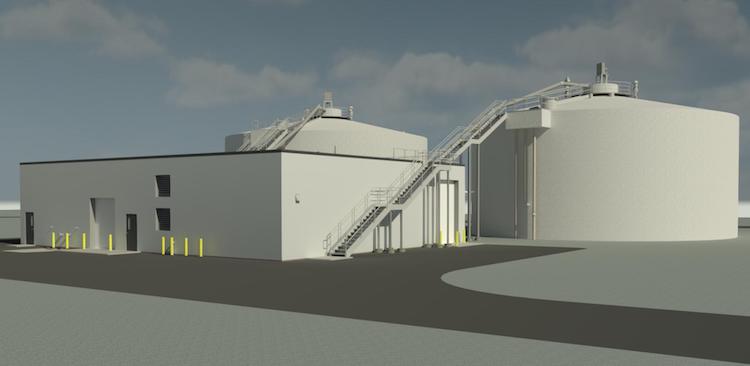Beyond simply being an alternative to the traditional design-bid-build method, collaborative project delivery offers wastewater utilities and authorities several benefits. Two of the most salient benefits of collaborative delivery are the flexibility it allows during the project development process and the performance guarantee it provides. The Altoona Water Authority’s (AWA) Water Resource Recovery Facility project with Energy Systems Group, LLC (ESG) is a recent example of a utility using the collaborative approach to address its long-term operational, environmental, infrastructure, technology, and financial needs through a single solicitation.
The AWA, located in central Pennsylvania, is using a guaranteed energy savings agreement (GESA) and a collaborative project delivery model to modernize its Westerly Wastewater Treatment Facility. The $35.6 million project will increase the plant’s efficiency, expand its biosolids processing capabilities, reduce carbon emissions, create renewable biogas, and provide new revenue to the AWA.
The AWA began exploring options to modernize its facility in 2018. In the beginning, the project was focused on developing a high-strength organic waste (HSOW) receiving program at the Westerly facility. The proposed program would produce a new revenue stream by allowing the facility to accept and treat HSOW from local industries. As the HSOW program was being developed, however, it became apparent that the AWA was facing a biosolids disposal issue that also needed to be addressed: its biosolids disposal costs were escalating in an unsustainable way, and it lacked viable alternative disposal options. Because the AWA had elected to use the collaborative delivery method, it was able to merge the original HSOW project with a project that addressed its biosolids issues. Without the flexibility afforded by the collaborative delivery approach, the AWA would not have been able to incorporate the important biosolids component into its original project. This feature would have had to have been carried out as a separate project, which would have required additional capital, time, and resources.
Another major benefit of the collaborative delivery approach is the performance guarantee. The GESA program in Pennsylvania includes a guarantee, and that guarantee can be expanded to reduce the risk to the utility as it relates either to its expenses or revenue. In this collaborative model the guarantee provides the AWA with a revenue guarantee on the HSOW being received. This means that if a supplier were to stop using the facility or a market disturbance occurred that led to a loss in revenue from the HSOW program, the AWA would be provided enough funds to meet the guarantee shortfall. This performance guarantee is critical to reducing project risk for utilities, and it is not available through the traditional design-bid-build delivery approach.
The AWA’s GESA project will set up the Westerly facility for long-term success. Not only will the AWA’s project address its biosolids management and drying infrastructure and provide new revenue, but it will also produce renewable biogas and allow the Westerly plant to potentially become a net zero facility in the future. Carrying out a holistic project like the AWA’s that provides such a wide range of benefits would be difficult outside of the collaborative project delivery approach. Not only did this approach provide the AWA the flexibility to fashion a project in real time that addressed its evolving needs, but it provided the AWA a performance guarantee that limited risk and helped this innovative project become a reality.

